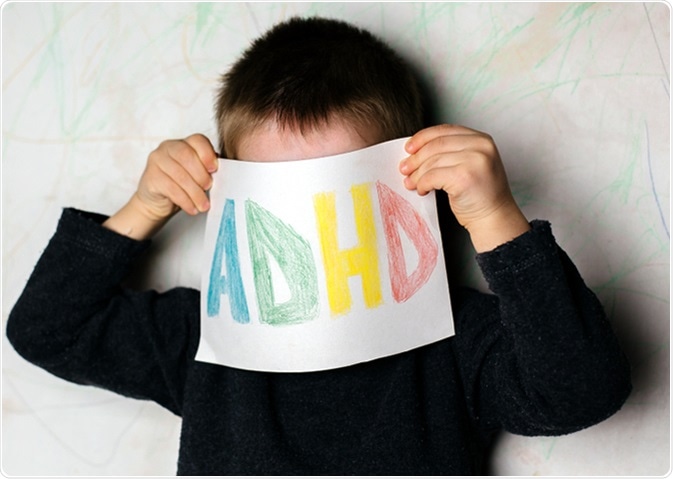Attention deficit hyperactivity disorder (ADHD) is a psychological condition characterized by impulsivity, inattention, and hyperactivity. Thought to affect between 3 and 7 percent of children and adolescents and 4 percent of adults, it’s one of the most commonly diagnosed neurodevelopmental disorders.

Image Credit: Rustam Shaimov / Shutterstock
Skip to
What is ADHD?
ADHD is a condition that commonly affects children and adolescents. However, there are cases of adults that present symptoms that were previously missed during their childhood. There are three main types of ADHD: primarily hyperactive, primarily inattentive and combined subtype which has significant symptoms of both. The symptoms experienced can be further categorized into two types of behavioral issues: hyperactivity and impulsiveness, and inattentiveness. The symptoms presented must last for at least a period of six months in order for a child to be diagnosed with the disorder.
Etiology of ADHD
Research investigating the causative factors linked to ADHD, do not point to one single biological cause. There is, however, a body of genetic studies that demonstrate a potential genetic link. For example, it has been found that 67% of children with ADHD also have a family member with the disorder. Other factors linked to the onset include, extreme stress during pregnancy, maternal smoking and being born prematurely. Addition to this, there is a growing body of research which suggests there may be neurological differences between those with ADHD and those without.
Are There Brain Differences in Patients with ADHD?
Contemporary research has concluded that ADHD symptoms can be linked with specific anatomical and functional abnormalities in a variety of regions in the brain.
Delay in Brain Maturation
Research investigating the structural differences between children with and without ADHD suggests that there may be delay in brain maturation in those with the disorder. Longitudinal and cross-sectional design studies highlighted that those with ADHD had 4 percent lower volume of white and gray matter in each lobe as well as overall cerebellar and cerebral volume when compared to children without ADHD. Furthermore, when comparing peak levels of cortical thickness, those in the control condition reached peak levels earlier compared to those with ADHD. This demonstrates that children with ADHD typically experience a delay in brain maturation, but follow the same patterns of brain development.
Differences in Subcortical Volumes
It has been found that those with ADHD typically have significantly smaller volumes in five key areas: the amygdala, putamen, accumbens, caudate and hippocampus. Differences in these areas could potentially explain some of the behavioral issues shown in those with ADHD. The amygdala and hippocampus connect with other areas of the brain such as the prefrontal regions, specifically the ventral medial prefrontal cortex. As a unit, they collectively help to regulate emotional processes, memory and attention. Furthermore, the amygdala features in a circuit with the orbitofrontal cortex which is involved in reward reinforcement and decision making. If disturbances occur in these areas, it may lead to impulsivity and behavioral disinhibition which often characterize ADHD.
Differences in the Hippocampus
Surface analyses used to measure the differences in the hippocampus between control groups and those with ADHD revealed an enlarged anterior hippocampus in participants with ADHD. This was specifically seen in the lateral and dorsal regions. Further analysis found that those with enlarged anterior hippocampi and overall hippocampi enlargement reported to experience fewer ADHD symptoms. An explanation for the finding could be that enlargement of the hippocampi occurs as a compensatory plastic hypertrophic reaction to the ADHD symptoms. This also aligns with research that has found that the hippocampus can be subject to synaptic remodeling and neurogenesis.
Further explanation of the differences may be linked to the hippocampus’ role in encoding information relating to sensory experiences. It is suggested that physical activity and stimulus-enriched external environments may be associated with an increase in neurogenesis. Therefore, the hippocampal hypertrophy may occur in response to exaggerated stimulus-seeking behavior that is often seen in children with ADHD.
Deficits in the Prefrontal Cortex
Imaging research has highlighted that those with ADHD typically have a deficit in functional activity and size of the right prefrontal cortex. Subsequent studies have reported the presence of disorganized tracks of white mater in the region in those with the psychological disorder which has been further linked to reduced prefrontal connectivity. This may explain some of the symptoms often displayed in those with ADHD, as deficits in prefrontal cortex functionality may be linked to the inability to properly regulate attention, emotion and behavior.
Despite ADHD being a common disorder, it’s extremely complex. Therefore, it’s important for researchers to gauge a better understanding of the structural brain differences in those with ADHD to enable further insights into the nature of the disorder.
Further Reading